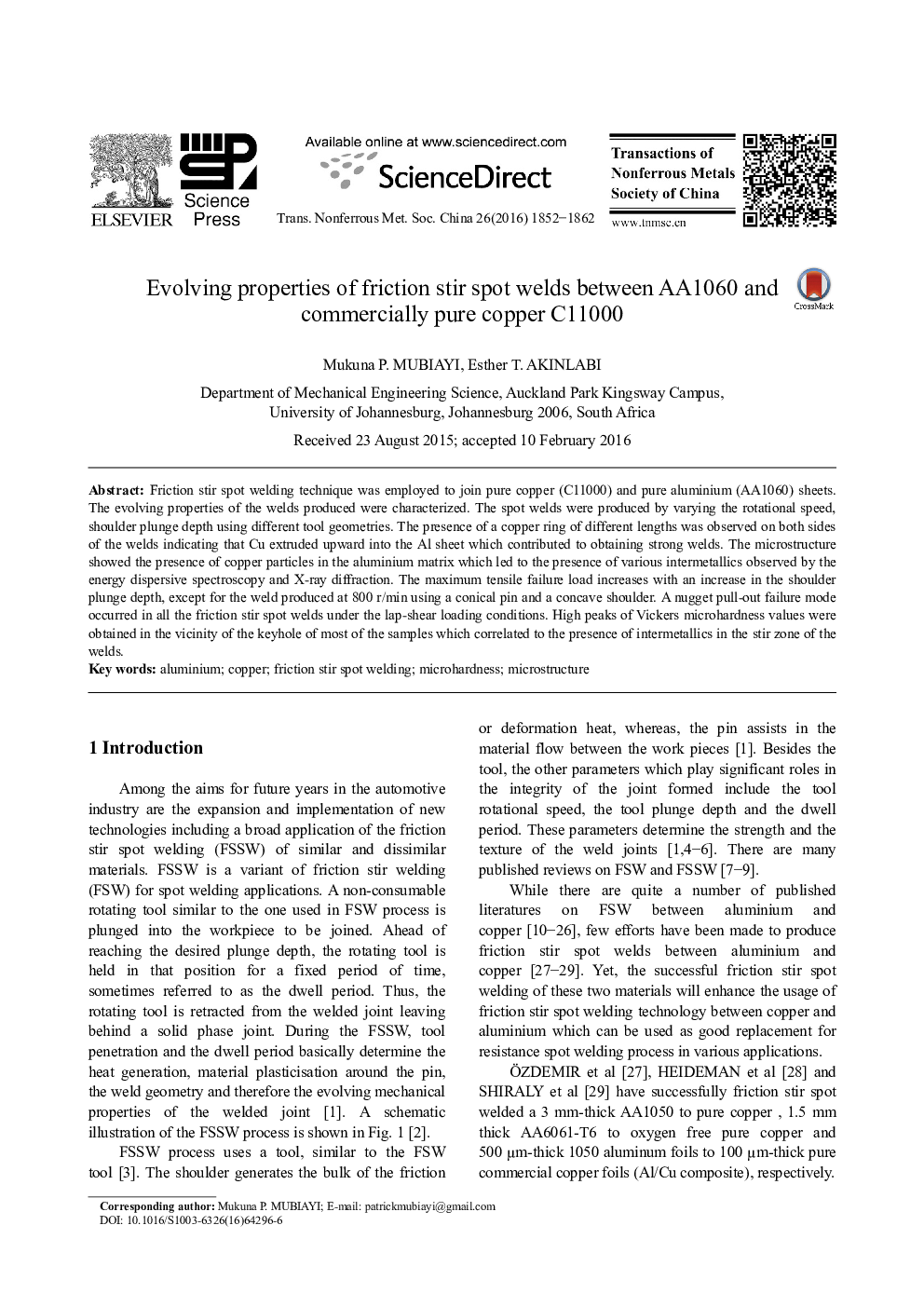| Article ID | Journal | Published Year | Pages | File Type |
|---|---|---|---|---|
| 1635562 | Transactions of Nonferrous Metals Society of China | 2016 | 11 Pages |
Friction stir spot welding technique was employed to join pure copper (C11000) and pure aluminium (AA1060) sheets. The evolving properties of the welds produced were characterized. The spot welds were produced by varying the rotational speed, shoulder plunge depth using different tool geometries. The presence of a copper ring of different lengths was observed on both sides of the welds indicating that Cu extruded upward into the Al sheet which contributed to obtaining strong welds. The microstructure showed the presence of copper particles in the aluminium matrix which led to the presence of various intermetallics observed by the energy dispersive spectroscopy and X-ray diffraction. The maximum tensile failure load increases with an increase in the shoulder plunge depth, except for the weld produced at 800 r/min using a conical pin and a concave shoulder. A nugget pull-out failure mode occurred in all the friction stir spot welds under the lap-shear loading conditions. High peaks of Vickers microhardness values were obtained in the vicinity of the keyhole of most of the samples which correlated to the presence of intermetallics in the stir zone of the welds.
